How to Adjust Water Level in a Toilet Bowl and Tank
Last Updated on July 27, 2023 by toilethaven
Does the level of water in your toilet bowl drop after flushing? Or is the toilet bowl water level too high while flushing? The low water level in the toilet bowl and high water level in the toilet bowl are, in most cases, caused by the same thing. In this post, I will show you how to adjust the water level in a toilet bowl.
A low or high water level in the toilet bowl can be fixed by adjusting the toilet float, replacing the fill valve, clearing the vent stack, or unclogging the toilet. It could also be as simple as making sure that the refill tube is properly clipped on the overflow tube.
If, unfortunately, the low water level results from a cracked toilet bowl, you will have to replace the bowl or the entire toilet if it is a one-piece toilet.
To adjust the water level in a toilet bowl, locate the screw connecting the float to the fill valve and turn it clockwise to increase the water level and counterclockwise to lower the water level. Also, make sure that the refill tube is connected to the overflow tube but not too deep so that it siphons water from the bowl.
Most problems affecting toilets originate inside the toilet tanks. A toilet tank has two important mechanisms that must work in sync in order to achieve flawless operation.
These are the flushing mechanism and the refill mechanism. They both control how much water leaves the tank and how much water gets into the tank, which determines the bowl’s water level.
Old toilet tanks and new toilet tanks look different. The old toilet tanks have a floating ball valve, while the new ones have a floating cup valve. It is also known as a floating cylinder.
If you want to adjust the water level in your toilet bowl, it means it is either too high or too low. Let us have a look at what causes each of them.
What Causes Water Level in a Toilet Bowl to Drop?
The following factors cause a low water level in a toilet bowl:
- Blocked toilet vent
- Faulty fill valve
- Long refill tube
- Clogged toilet trap
- Worn out/unclipped refill tube
When the water level in your toilet is too high, it is a sign that the toilet float is not properly adjusted or that the toilet is partially clogged and draining slowly.
If the toilet bowl fills with water and then slowly drains, it is a sign of a clogged toilet. When the toilet bowl water level remains high throughout, you need to adjust the toilet float.
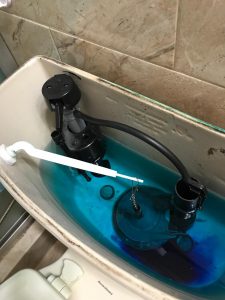
Your toilet should be able to retain some water at the bottom of the bowl. The water level in a toilet bowl ranges from a quarter to half of the bowl, depending on the type of bowl you have. But how does a toilet bowl manage to keep a constant level of water after every flush?
A toilet trap is an S-shaped passage at the bottom of the toilet bowl where flush water enters the drainpipe. When you deposit a large amount of water in a short time, the trap, with the help of gravity, helps to create a siphon that evacuates the contents of the toilet bowl.
The shape of the trap also enables the trap to hold a certain amount of water at the bottom of the bowl. This helps to prevent unpleasant sewer gases from getting into the house.
For optimum performance of the toilet, the toilet bowl water lever has to be at a particular level. If the water level drops below this level, try the below methods to troubleshoot it.
1. Check the Water Level Inside the Tank
The water level inside the toilet tank is directly proportional to that of the toilet bowl. If the water level inside the tank is too low, you will also have a low water level inside the bowl and, as a result, a slow-flushing toilet.
The opposite is also true. A high water level inside the tank will mean an equally high water level in the bowl.
Ideally, the water level inside a toilet tank should be about 1/2 inch below the overflow tube. Some toilets also have the level marked on the tank.
If the water level in the tank is not as it should be, you will need to adjust the toilet float.
2. Check the Vent for Blockage
The vent is a pipe that runs from the drain pipe to the roof of your house. It has two jobs. The first is to vent out sewer gases, and the second is to allow free air circulation, avoiding the creation of a vacuum in the sewer line. If this happens, the water in your toilet bowl will be sucked out dry.
When you flush your toilet, all the water in the bowl and the trap drain into the pipe with a gurgling sound. Then your vent might be blocked. The blocked vent, in this case, acts as a siphon. The gurgling is a result of the trap air seal being broken. Other appliances in your house, such as a bathtub, might also exhibit this problem.
A blocked vent could be a result of the following:
- Golf/tennis/baseballs trapped inside
- Birds’ nests
- Dead birds and rodents
- Tree leaves and other trash
To unblock a vent, climb to the top of the roof and see if the blockage is something you can reach with your hand. If not, use a plumber’s snake or a water hose. Keep flushing the toilet and check out for a change in the water level in the bowl.
3. Check the Status of the Refill Tube
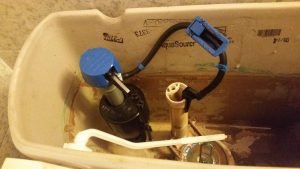
A toilet refill tube is a small (normally black) narrow tube that runs from the fill valve to the overflow tube. When you flush the toilet, the fill valve is responsible for filling the water in the tank. While that happens, the refill tube sends a small amount of water into the toilet bowl via the overflow tube.
The overflow tube inside the toilet tank is a cylindrical tube that acts as a failsafe. If the fill valve fails to shut off, the overflow tube drains the excess water to the bowl, avoiding flooding the bathroom and the house.
If the refill tube is damaged, worn, or unhooked from the overflow tube, it will not send water down to the bowl after flushing. As a result, the water level in the bowl will be lower than it should be.
The fill tube should also not run too deep inside the overflow tube. If this is the case, it will cause a siphoning effect after flushing. The long overflow tube will act as a vacuum and suck water from the toilet bowl.
To check the condition of the fill tube, remove the lid of the toilet tank and observe for any abnormalities. If it is worn out, it is super easy to replace it. If it is unhooked, hook it back to the overflow tube.
4. Check if the Fill Valve is damaged
The fill valve is connected to the water supply line and is responsible for refilling water in the toilet tank after every flush. If the fill valve is damaged or just leaking, less water goes to the refill tube and the toilet bowl.
To check the behavior of your fill valve, remove the tank lid and flush the toilet. If the fill valve is defective, it will need to be replaced.
5. Check if the Toilet Bowl is cracked
A cracked toilet bowl will have water leaking at the base of the toilet or the subfloor after every flush, and hence the water level in the toilet bowl will be low.
A toilet bowl can even be cracked way down in the trap and drain the water inside the drain pipe. This can be quite hard to diagnose.
Check at the base of the toilet for any toilet bowl cracks. A cracked toilet bowl will need to be replaced.
6. Check if the Trap/Drain is blocked
A blocked toilet trap or drain will cause the toilet bowl water level to rise. But not always. If a rag clogs the trap/drain, it could also cause a siphon effect, resulting in water being sucked from your toilet bowl and hence a low bowl water level.
If your suspect your toilet is blocked at the trap or drainpipe, run a toilet auger to unblock the toilet. While doing this, be careful not to scratch the inside of your toilet tank. It is possible to leave some very disgusting scratch marks.
How to Adjust Water Level in a Toilet Bowl – Single and Dual Flush Toilets
A high water level in a toilet bowl is most likely caused by a blocked toilet trap or drainpipe. The water can be so high in the toilet bowl and then, with time, drop to a very low level. This is due to some form of siphoning in the drain pipe.
To sort this problem, use a plumber’s snake to unblock the trap or drainpipe. Always be careful not to scratch the inside of the bowl, which can leave some unpleasant marks.
Another thing that can cause the water level in the toilet bowl to rise is having too much water in the toilet tank. When the toilet tank has too much water, you flush, and all the water is emptied into the bowl, which can even overflow.
To adjust the level of water in the bowl, in this case, you should adjust the floating ball/cup height inside the tank.
The following 3 methods will help you adjust the level of water in a toilet bowl if the problem is with the toilet fill valve:
Items Needed
- Screwdriver
- Adjustable wrench
- Empty bucket
How to Adjust the Water Level in Toilet Bowl by Replacing the Fill Valve
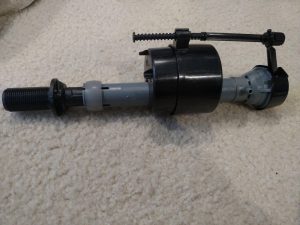
- Turn off the water inlet valve. You will locate this valve on the wall behind the toilet. Turn it clockwise. Some toilets use a pull and push valve. In this case, pull the valve outwards.
- Flush the toilet and hold the trip down to flush out all the water.
- Disconnect the water supply line from the tank. Always use your hands to disconnect before trying to use a wrench. Have a bucket ready to drain the water in the line and any water that may have been left in the tank.
- Loosen and remove the locknut as well.
- Remove the toilet tank’s lid and keep it away in a safe place. It’s made of ceramic and hence easy to break.
- Reach the base of the fill valve.
- Disconnect the fill tube from the overflow tube and remove the old valve.
- Slide in the new fill valve onto the existing base.
- Secure the fill valve with the locknut.
- Attach the refill tube to the overflow tube.
- Reattach the water supply line.
- Open the water inlet valve and let the water fill the tank.
- Flush the toilet a couple of times and look for a change in the water level in the toilet bowl.
- Install the lid on top of the tank.
How to Adjust the Level of Water in a Toilet Bowl by Adjusting the Float Ball
Most old toilet models use a floating ball valve. A ball with an arm connected to the fill valve. When the toilet is not in use, and the tank is full of water, the ball is floating on the water, and the fill valve is closed. After flushing, the floating ball falls to the bottom of the tank and opens the fill valve.
As the water in the toilet rises, the floating ball rises too until the desired water level is reached and the fill valve closes.
If the floating ball height is too low, less water will fill the tank, which means the fill tube will also send less water to the toilet bowl.
Before fixing this, make sure the floating ball is not defective. Shake it a little to ensure it has no water inside. If it has any water, it will need to be replaced. The water makes it heavier, and thus cannot float properly.
Some people will advise you to either bend upward or downwards the floating ball arm to adjust the toilet water level. This is, however, not a correct and accurate way to do it.
How to Adjust a Toilet Float Ball
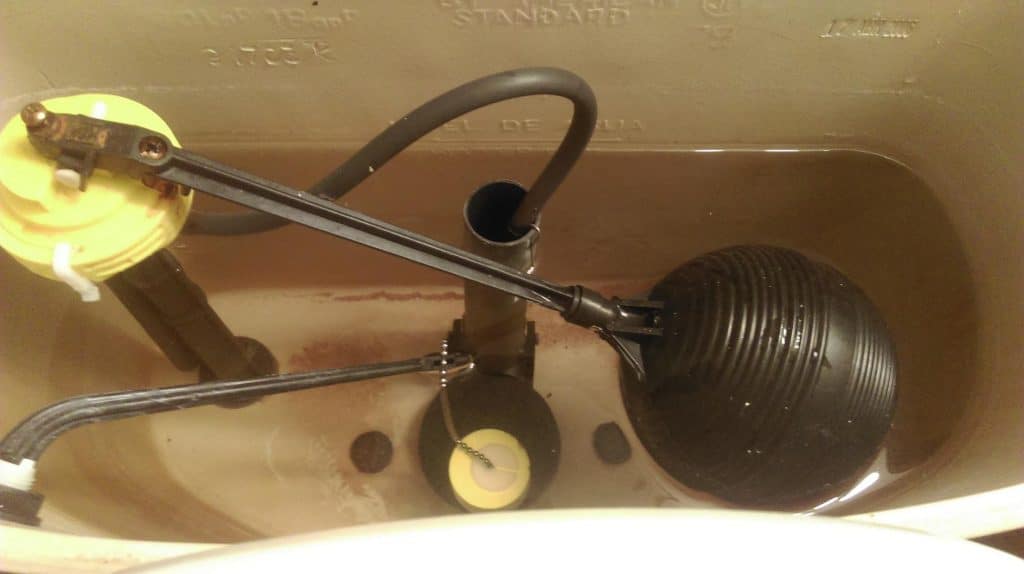
- Turn off the water inlet valve. Locate this valve at the back of the toilet. You will either turn it clockwise or pull it out, depending on your valve type.
- Flush the toilet and hold the trip until all the water is drained.
- Remove the toilet tank lid and place it in a safe place.
- Look at the general condition of the floating ball.
- If the floating ball has water inside, you will need to replace it.
- If all seems well, look for an adjustment screw where the floating ball arm meets the valve assembly.
- Using a screwdriver, turn this screw clockwise once. Open the water valve and watch the new water level in the toilet tank.
- The water level of a toilet tank should be half an inch to one inch below the overflow tube.
- Keep adjusting until you arrive at your desired height.
- Never turn the screw more than once at a time. The tank might overflow.
How to Adjust the Level of Water in Toilet Bowl by Adjusting the Floating Cup
Most modern toilets use a floating cup which is also known as a floating cylinder, instead of a floating ball. It is positioned parallel to the vertical fill valve assembly in a toilet tank.
When this floating cup is too low or too high in the tank, it affects the amount of water filling the tank and, subsequently, the toilet bowl.
How to Adjust the Height of a Toilet Floating Cup /Cylinder
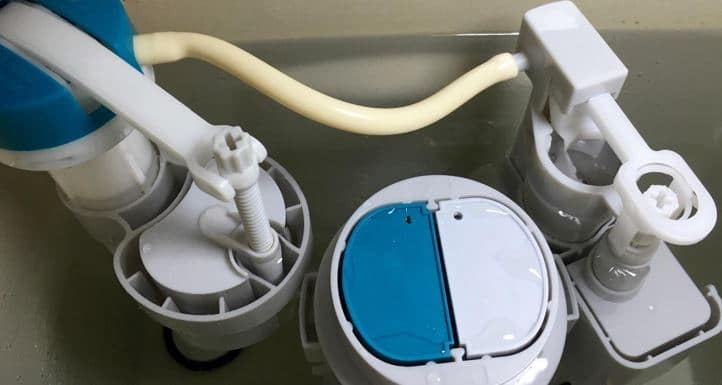
You can do this by squeezing a release clip on the side of the floating cup or turning an adjustment screw adjacent to the floating cup.
To adjust the height of a floating cup with a release clip, squeeze the clip and move it up if you want to raise the water lever in your tank. To lower the water level in the tank, squeeze the clip and move it downwards.
With every move, have the water inlet tank shut off and the toilet flushed. After moving the clip, open the valve and observe the water level.
With the adjustment screw, use a screwdriver to turn it clockwise to raise the water level in the tank and counterclockwise to lower the water level in the tank. Don’t turn more than once at a time without checking the difference in water level. Always have the tank empty while working on the valve. Only fill the tank to confirm the water level.
Conclusion
That is how to adjust the water level in a toilet bowl. It might take you some minutes to identify the source of the problem, but ultimately the end justifies the means.
If you are struggling with low or high water levels in the toilet bowl, more than 90 % of the time, the problem originates from the toilet tank. It should therefore be the first thing you check. As we have seen, most of these repairs are easy and cheap. If you, however, decide to call a plumber, it can cost you much more.